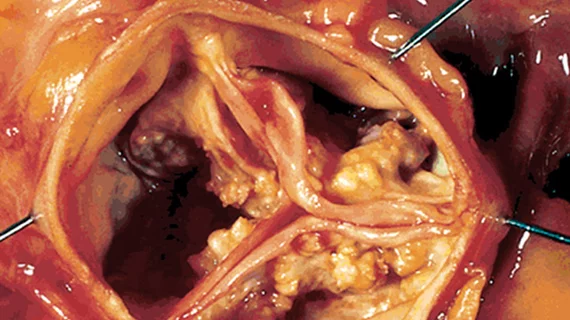TAVR safe and effective for patients with mixed aortic valve disease
Transcatheter aortic valve replacement (TAVR) may be as safe for patients with combined aortic stenosis (AS) and aortic regurgitation (AR), also known as mixed aortic valve disease (MAVD), as it is for patients who present with pure AS.
That is one of the biggest takeaways from a new analysis published in the American Journal of Cardiology.[1]
“According to the 2020 American Heart Association/American College of Cardiology guideline for the management of patients with valvular heart disease, clinical decisions on the management of MAVD should follow the guidelines for the predominant lesion,” wrote lead author Jelani Grant, MD, of the University of Miami Leonard M. Miller School of Medicine, and colleagues. “There is, however, a lack of robust data regarding the overall safety and efficacy of TAVR in patients with MAVD, making evidence-based recommendations in this group of patients challenging.”
Grant et al. explored data from the National Readmissions Database, focusing on more than 100,000 TAVR procedures performed from 2011 and 2017. Patients were excluded if they presented with pure AR or underwent percutaneous coronary intervention, surgical aortic valve replacement or coronary artery bypass grafting during their hospitalization.
Overall, MAVD patients and pure AS patients were associated with similar rates of in-hospital mortality (2.5% vs. 2.6%) and paravalvular leak (PVL) (1% vs. 1.3%) rates. However, MAVD patients had lower rates of 30-day readmission (0.5% vs. 8.8%), 90-day readmission (0.8% vs. 16%), acute kidney injury (12.9% vs. 15.1%), major bleeding events (7.4% vs. 9.6%), ischemic stroke (2% vs. 5.7%) and mechanic circulatory support use (1.9% vs. 4.5%) than pure AS patients.
“Our findings affirm to a growing body of evidence that TAVR in MAVD yields comparable results in terms of safety and efficacy compared with pure AS and may, in fact, be associated with reductions in early complications and attendant morbidity and mortality,” the authors wrote. “We hypothesize that the large discrepancy in readmission rates between MAVD and pure AS groups is most likely the result of a low number of MAVD hospitalizations included in the analysis and use of weighted data, rather than a true pathophysiologic difference between MAVD and pure AS.”
Another key difference, the authors noted, was that permanent pacemaker (PPM) implantation was more likely among MAVD patients (9.5%) than pure AS patients (5%).
“It is known that patients with pure AR have a higher incidence of PVL after TAVR and thus, we hypothesize that in an effort to overcome the higher reported incidence of PVL in patients with AR, aggressive prosthetic valve oversizing may play a significant role in the higher PPM implantation rates seen in patients with MAVD,” the authors wrote.
Related TAVR Content:
CT-FFR before TAVR improves detection of coronary artery disease, limits invasive imaging exams
Late balloon valvuloplasty safe and effective for patients with THV dysfunction
Transcaval TAVR outperforms transaxillary TAVR when femoral access is not an option
VIDEO: TAVR durability outperforms surgical valves
Reference:

